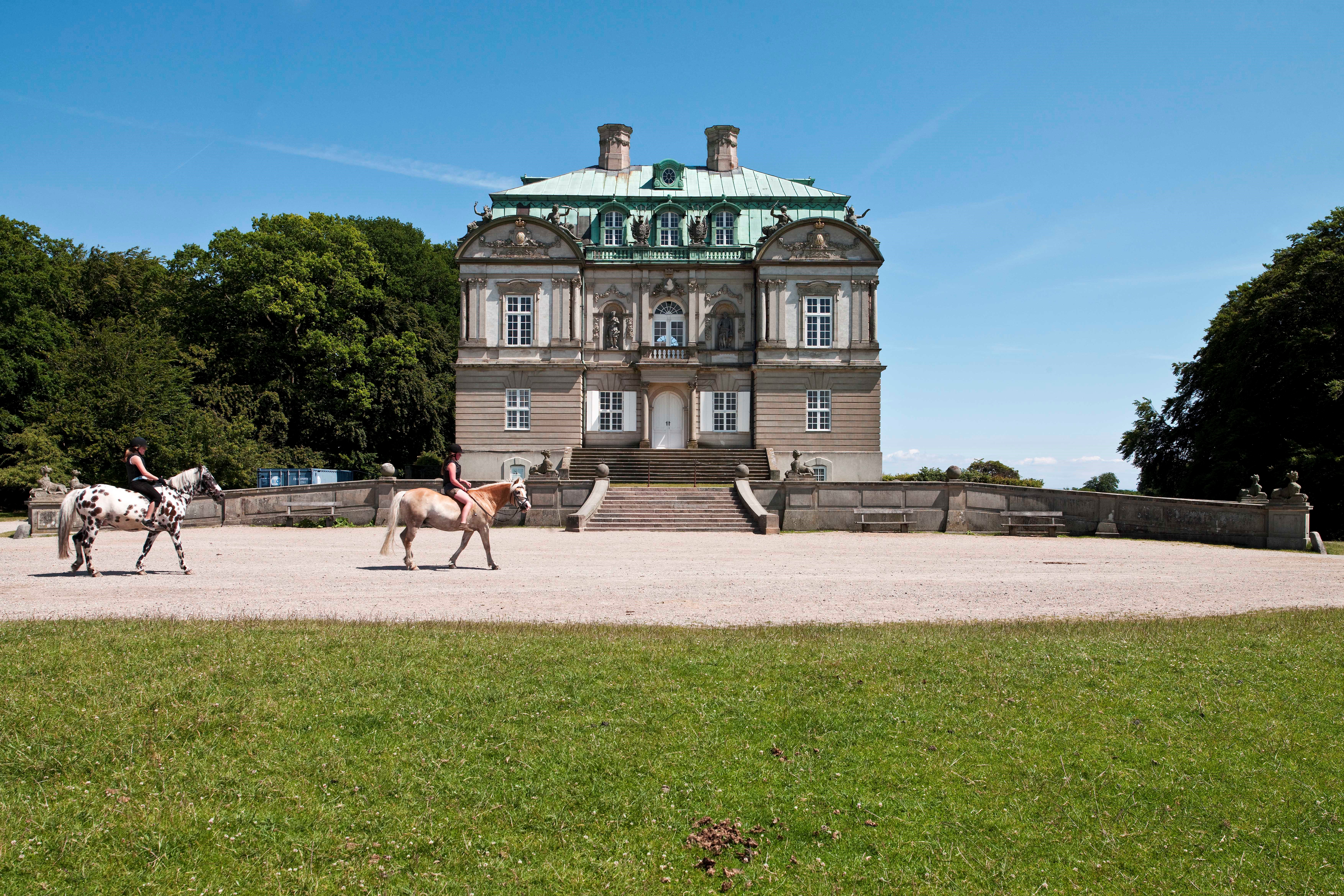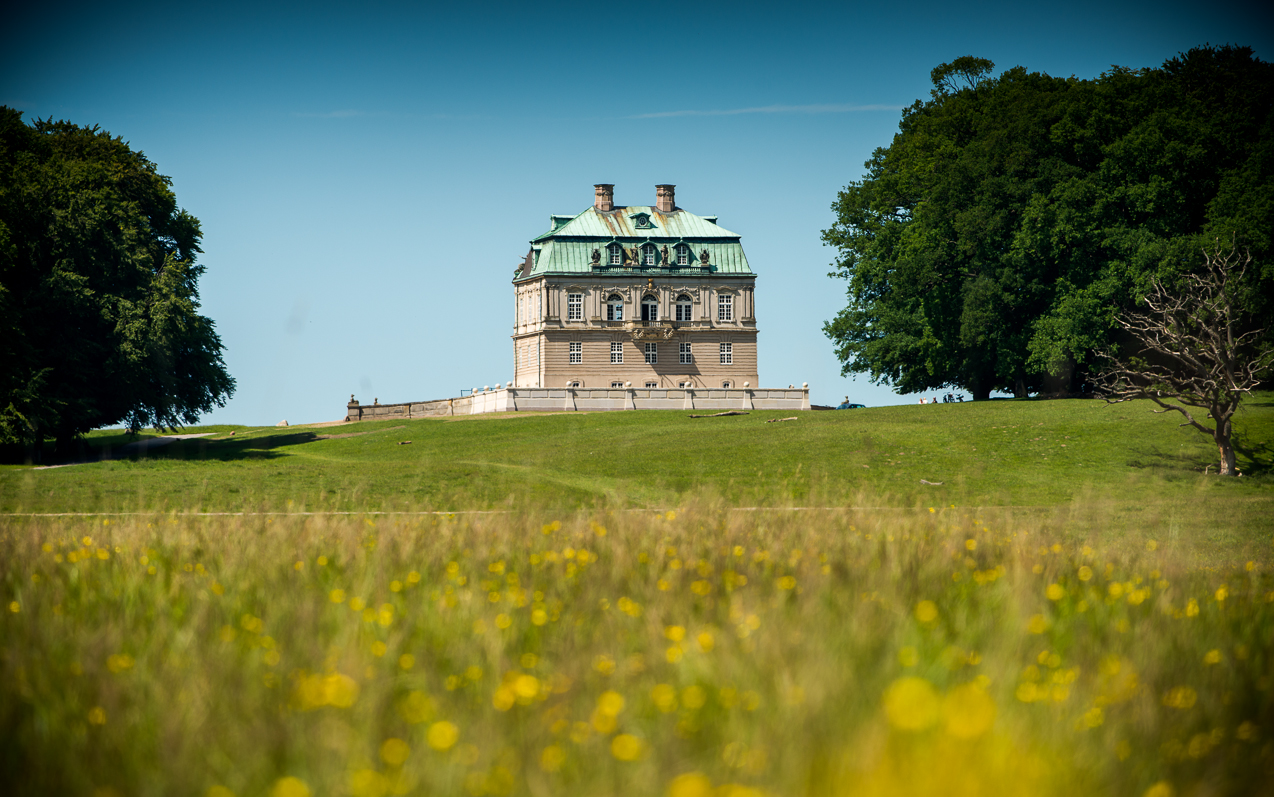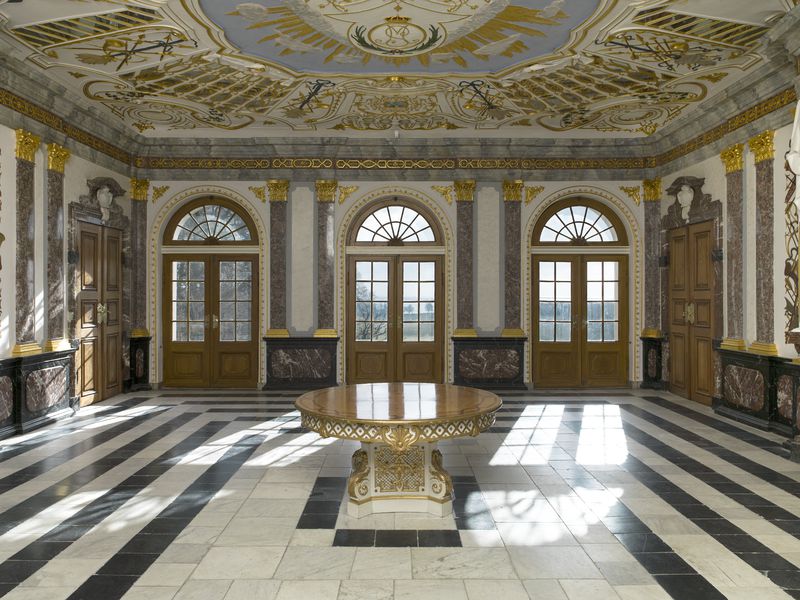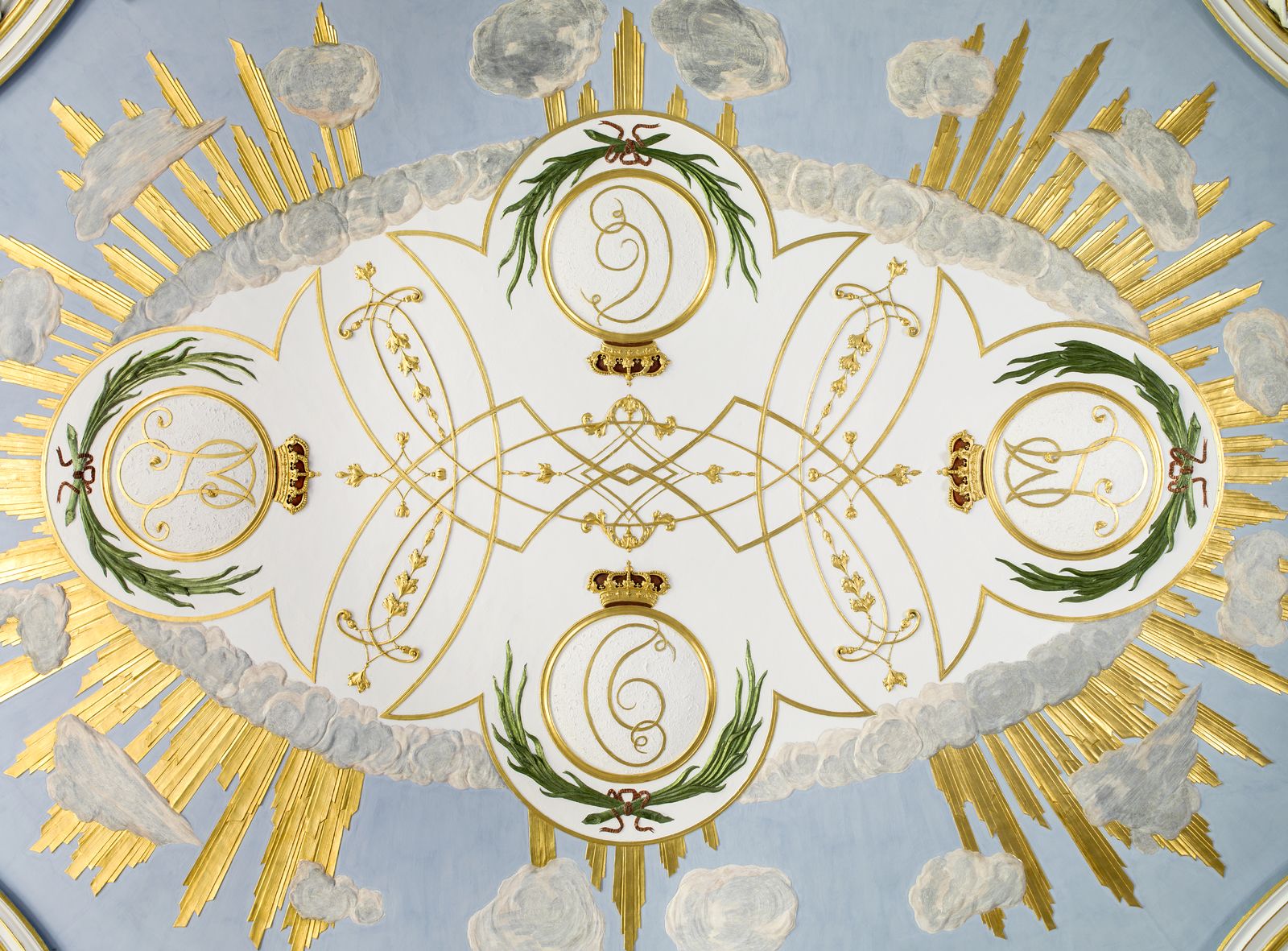The Hermitage Palace
From its location in the middle of the Hermitage Plain north of Copenhagen, the charming baroque Hermitage Palace commands stunning views of the surrounding Deer Park and the Sound.
A visit to the Hermitage Palace is a journey 250 years back in time into a world of exquisite elegance and royal splendour in Christian VI’s beautiful hunting lodge. Here you can learn about the dramatic par force hunts that played out in the forest around the palace, royal entertaining in 1740 and the sophisticated mechanical dining table that gave the palace its name.


Dining in splendid isolation
The beautiful Hermitage Palace has occupied its site in the Deer Park since 1736. Christian VI had the small palace built in replacement of an older hermitage lodge, where Christian V had entertained guests during the high-speed par force hunts that were a popular royal pastime at the time. From the unique dining hall of the Hermitage Palace, The King and his closest companions could follow the hunt in the Deer Park while dining en eremitage, that is, without the presence of servants. Thanks to an ingenious hoisting device, the dinner table could be lowered into the basement, where it was set by the kitchen staff. The well-laid table was then hoisted up to the dining hall, where the royal party could enjoy their meal in privacy.


Par force hunting
Just as the term for the meal served in the palatial dining hall drew on foreign inspiration, the name of the hunting practice unfolding outside the windows also came from abroad. ‘Par force’ means ‘by force’, an apt term for this particular hunting tradition that became especially popular in Denmark after Christian V became King, in 1670.
At the outset of the hunt, The King and his hunting party selected the biggest and strongest stag in the Deer Park. With the aid of agitated dogs, red-clad hunters blowing hunting horns then pursued the deer with ferocious intensity until the animal collapsed from exhaustion. This pursuit might last several hours, and as the stag was being chased across the plain and through the forest, The King could follow events from inside the Hermitage Palace.
I t was only once the exhausted stag succumbed to the mounted hunters and the hunting dogs that The King and his close circle were called to the scene, so that The King could administer the coup the grâce, ending the deer’s life. This allowed The King to appear as a great and powerful leader – master of life and death – in reflection of his position as the absolute ruler.

A palace in continued royal us
Today, the Hermitage Palace and Deer Park are no longer the scene of similar drama and violence. Par force hunting is a thing of the past, as is the mechanical dining table. The palace is still occasionally used for royal events but of a much more peaceful nature, including luncheons in connection with royal hunts, the annual Hubertus Hunt at the Deer Park or official occasions such as state visits.
Book a guided tour
The Hermitage Palace is only open to visitors on guided tours.
To book a tour, contact Royal Danish Collection’s booking office at booking@kosa.dk.
The dates of public tours will be announced on this website.
 Dansk
Dansk
 English
English
 Deutsch
Deutsch

